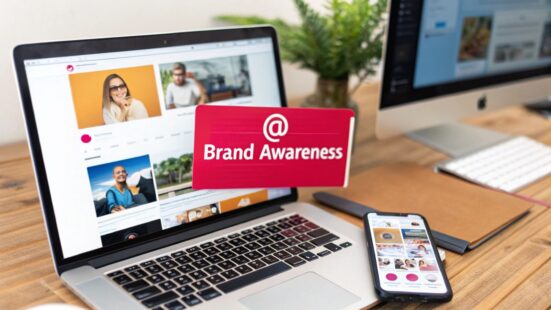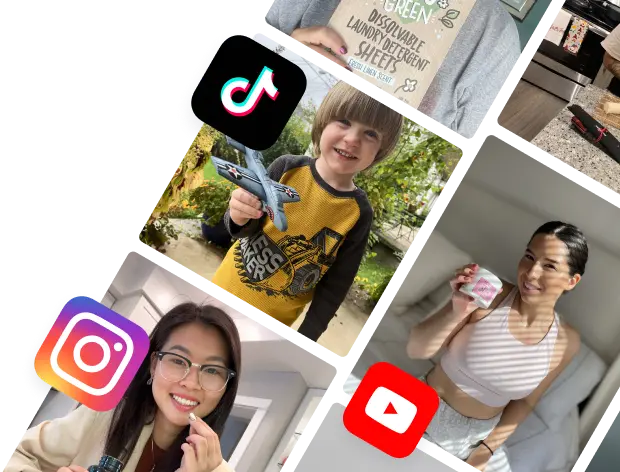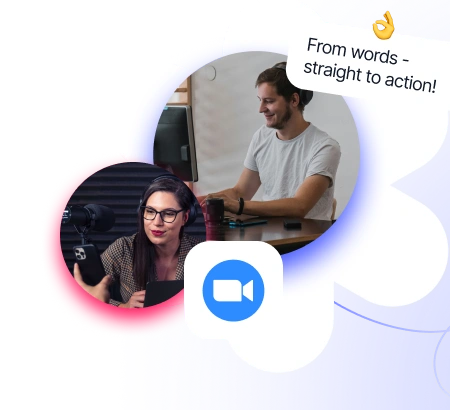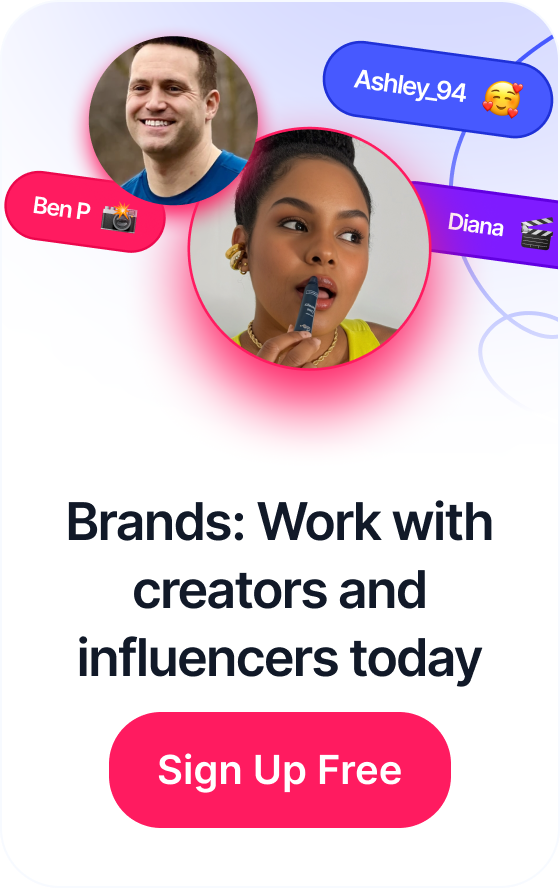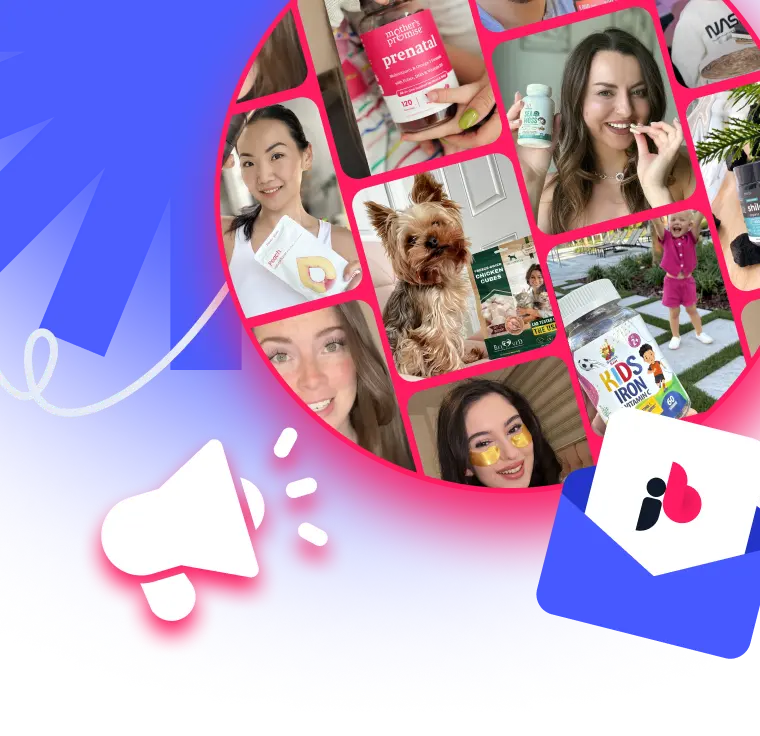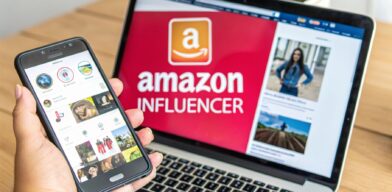 Influencer Program Amazon: Your Ultimate Guide to Success
Influencer Program Amazon: Your Ultimate Guide to Success
Building brand awareness isn't about shouting the loudest. It's about consistently showing up where your audience spends their time, armed with a clear and memorable identity. It comes down to creating valuable content, getting involved in the community, and using the right partnerships to build real trust.
Done right, customers will think of you first, every time.
Table of Contents
Why Brand Awareness Is Your Most Valuable Asset

Let's cut through the marketing jargon. In today’s crowded e-commerce world, strong brand awareness isn't just some feel-good metric—it's your single greatest competitive advantage. It’s that invisible force that makes a shopper choose your product over a nearly identical one, often without a second thought.
This isn’t about just being seen; it's about being remembered and, most importantly, trusted. When people recognize your brand, they instantly connect it with a certain level of quality, a specific vibe, or a solution to their problem. This mental shortcut makes their buying decisions a whole lot easier and builds a foundation of loyalty that’s incredibly tough for competitors to break.
Before we dive into the "how," it's crucial to understand the "what." A solid brand awareness strategy isn't just one thing; it's a mix of interconnected efforts.
Here is a quick overview of the key components we will unpack in this guide for building brand awareness that sticks.
Core Pillars of a Modern Brand Awareness Strategy
| Pillar | Primary Goal | Key Channels |
|---|---|---|
| Influencer Marketing | Build trust and credibility through authentic voices your audience already follows. | Instagram, TikTok, YouTube, Blogs |
| User-Generated Content (UGC) | Generate social proof and authentic content by empowering your customers. | Social Media Mentions, Reviews, Customer Photos/Videos |
| Paid Social Advertising | Amplify your message and reach highly targeted new audiences at scale. | Facebook Ads, Instagram Ads, TikTok Ads, Pinterest Ads |
| Content & SEO | Attract organic traffic and establish authority by answering your audience’s questions. | Blog Posts, How-To Guides, Videos, Case Studies |
| Analytics & Optimization | Measure what’s working, understand your audience better, and refine your strategy. | Google Analytics, Social Media Insights, Platform Dashboards |
Each of these pillars plays a unique role, but they work best when they're all rowing in the same direction. Now, let's get into why this is so critical for your bottom line.
The Economic Moat of a Strong Brand
Think of your brand awareness as a protective moat around your business. This moat shields you from the chaos of market swings and relentless price wars. Customers who know and trust your brand are often willing to pay a little more and are far more forgiving if you have an off day.
What does that mean for your business? A more stable revenue stream and a much higher lifetime customer value. Simple as that.
Of course, a big part of the strategy comes down to how you invest your marketing dollars. For many DTC brands, the debate often boils down to organic vs. paid, with a common question being the effectiveness of SEO vs PPC. Both are powerful for getting your name out there, but they play different roles in a truly comprehensive plan.
The sheer scale of global brand value shows just how massive the economic impact of this investment can be.
The total value of the world's top 100 brands recently hit an unprecedented $10.7 trillion. Tech-driven disruptors were behind most of this growth, with Apple holding its top spot at a staggering brand value of $1.3 trillion.
This isn't a fluke. The data proves that building a memorable brand isn't just "good marketing"—it's a core driver of financial success. The most valuable companies on the planet didn't get there by accident. They poured resources into making their brand names synonymous with their entire category.
From Fleeting Trend to Lasting Business
In the hyper-speed world of e-commerce, trends evaporate as quickly as they appear. A viral product might give you a nice sales spike, but that momentum is temporary without a strong brand to back it up.
Real brand awareness ensures you're not just a one-hit wonder.
It creates a lasting impression that keeps customers coming back, turning that initial spark of curiosity into long-term advocacy. When you focus on building brand awareness, you’re not just chasing vanity metrics; you’re building an asset that will fuel your growth for years to come.
Build Your Foundation on Genuine Connection
Before you even think about brand awareness, you need a solid foundation. This isn't about a slick logo or a snappy tagline. It's about digging deep and defining what your brand actually stands for. Genuine connection is the bedrock of any brand that sticks, and it all starts by looking inward.
Without that core identity, every campaign you run will feel hollow. Customers are smarter than ever—they can smell a brand that's just going through the motions a mile away. A strong foundation ensures every ad, every partnership, and every piece of content is a true reflection of who you are.
Define Your Brand Mission and Values
What’s the one thing your brand exists to do? Your mission statement can't be a paragraph of corporate-speak nobody understands. It needs to be a clear, simple declaration of your purpose. Think of it as your brand’s north star, the thing that guides every single decision.
Take a DTC sustainable activewear brand, for example. Their mission might be: "To empower active lifestyles while protecting our planet." Right away, you know what they're about.
From that mission, your values start to take shape. These aren't just words for your "About Us" page; they're the principles that guide your actions. What do you actually care about?
- Sustainability: Using recycled materials and ethical manufacturing.
- Inclusivity: Featuring a diverse range of body types in all marketing.
- Community: Hosting local cleanup events or fitness meetups.
These are the things that attract customers who share your worldview and build a fiercely loyal following. When your actions line up with your words, you create a powerful sense of trust that's absolutely critical for long-term growth.
Craft a Unique and Authentic Brand Voice
Your brand voice is what brings your mission and values to life. It’s the personality that shines through in your social media captions, email newsletters, and even your product descriptions. Are you witty and playful? Inspiring and educational?
There’s no single right answer, but whatever you choose, it has to be consistent. A brand that’s buttoned-up and professional on its website but drops edgy memes on TikTok is just going to confuse people.
Key Takeaway: A consistent brand voice across all channels builds familiarity. Familiarity breeds comfort, and comfort is a crucial step on the path to brand trust and, ultimately, customer loyalty.
A good trick to find your voice is to picture your ideal customer. How would you talk to them if you were having a real conversation? Use that as your guide. This human-first approach is what makes a brand feel real and relatable, turning passive followers into die-hard fans.
Aligning With Creators Who Embody Your Ethos
Once you know exactly who you are, finding the right partners gets a whole lot easier. The goal isn’t just to find influencers with big follower counts; it's to find creators whose personal brand and values genuinely reflect your own. This is where authenticity stops being a buzzword and starts being a powerful marketing tool.
Modern shoppers can spot a fake partnership from a mile away. A creator pushing a product they clearly don’t care about can do more harm than good. Your audience expects a real, genuine connection between the creator and your brand.
The numbers back this up. In 2025, studies found that a staggering 81% of consumers need to trust a brand before they'll even think about buying from it. On top of that, two-thirds of U.S. shoppers base their purchase decisions on shared social values, and 57% prefer brands they feel a personal connection with. This makes it crystal clear: trust and shared values are non-negotiable. You can dive deeper into how branding statistics shape consumer behavior.
This is precisely the problem platforms like JoinBrands were built to solve. You can filter a massive network of creators not just by follower count, but by their niche, content style, and audience demographics. It allows you to pinpoint people who feel like a natural extension of your brand’s story.
When you start with a creator who’s already a true fan or a perfect match for your brand’s ethos, the content they create feels less like an ad and more like a trusted friend’s recommendation. That’s the secret to building brand awareness that feels earned, not bought.
Turn Influencers and UGC Into a Content Engine
Let's be honest: the old model of paying an influencer for a single post that vanishes in 24 hours is broken. If you're serious about building real, lasting brand awareness, you have to think bigger. It's time to build a content machine—one that runs on the powerful combination of influencer marketing and user-generated content (UGC).
The real momentum kicks in when these two work together. Influencers get your brand in front of new, trusting audiences. Then, a flood of authentic UGC provides the social proof that seals the deal. This creates a powerful flywheel: creator content inspires people to post their own content, which validates your brand and pulls in even more customers.
Go Beyond Follower Counts
First things first, you need to find the right creators. For most DTC brands, this means looking past the big-name, celebrity-status influencers and focusing on the people who have a much stronger, more authentic connection with their audience: micro- and nano-influencers.
Sure, they have smaller followings, but their engagement is through the roof. A recommendation from a micro-influencer doesn't feel like a sponsored ad; it feels like a tip from a friend you trust. That's gold for building genuine awareness.
- Micro-influencers (10k-100k followers): These creators are the go-to experts in their niche, whether it's sustainable fashion or vegan skincare. Their followers hang on their every word.
- Nano-influencers (1k-10k followers): Their reach might be smaller, but nano-influencers have the highest engagement rates of all. Their posts feel incredibly real and can spark powerful word-of-mouth in tight-knit communities.
When you partner with these creators, you're not just buying eyeballs; you're tapping into established communities that perfectly match your ideal customer. It's a targeted strike that makes sure your message actually lands instead of just being more noise.
Write Creative Briefs That Inspire
Once you’ve found your perfect partners, the next step is setting them up for success. A vague or, even worse, an overly restrictive creative brief is a surefire way to get bland, generic content that nobody engages with. Your job is to give them clear direction without boxing them in.
A great brief is a balancing act. You provide the guardrails—the core message, key product benefits, campaign goals—but you leave plenty of room for the creator's personality and style to come through. That’s how you get content that feels native to their feed and truly connects with their audience.
A great creative brief doesn't just list requirements; it inspires creativity. Frame your campaign as a collaborative storytelling opportunity, not a list of chores. This mindset shift empowers creators to produce their best, most engaging work for your brand.
For example, instead of just saying, "Showcase our new water bottle," try something more inspiring: "Show us how our new insulated bottle gets you through your busiest day, from your morning workout to a late-night study session." This kind of prompt leads to dynamic, story-driven content that actually grabs people's attention. The goal is to make content creation, optimization, and distribution a single, seamless flow.
This visual breaks down the process of turning an idea into visible content that actually builds brand awareness.
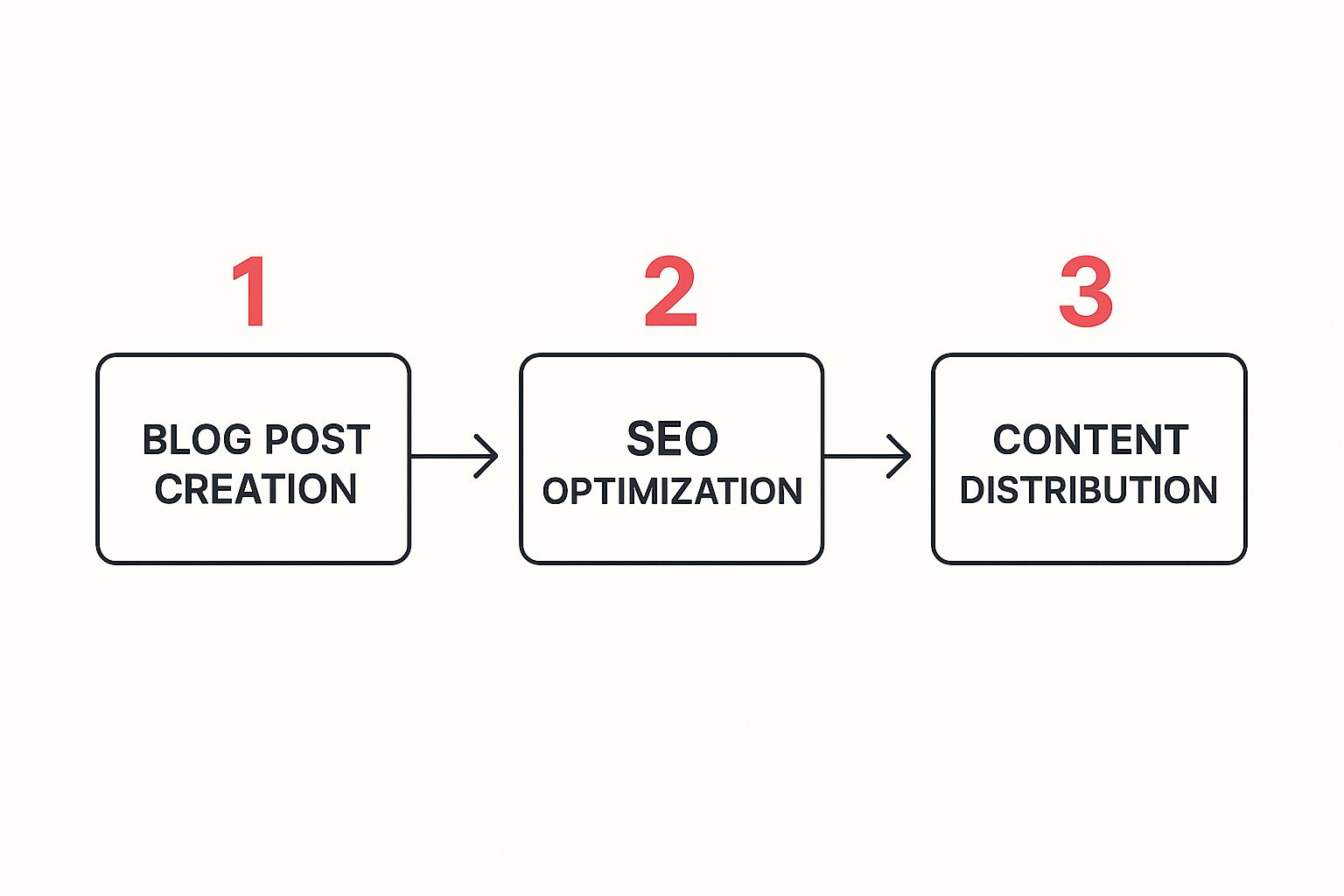
As the graphic shows, just making the content is step one. Getting it seen through optimization and smart distribution is what really drives results.
Create the UGC Flywheel Effect
Ultimately, your influencer partnerships should be the spark that ignites a fire of organic user-generated content. When someone sees a creator they admire using your product, it makes them feel comfortable trying it, too. And when they have a great experience, they're much more likely to post about it.
That's the flywheel in action. Here’s how you get it spinning:
- Encourage Sharing: Don't be shy. Ask your influencers to include a direct call-to-action in their posts, encouraging followers to share their own experiences using a specific campaign hashtag.
- Run Contests and Giveaways: A UGC contest is a fantastic way to generate a ton of authentic content quickly. Offer a cool prize for the best customer photo or video—it gamifies the experience and gets people excited to participate.
- Feature Your Customers: Make your customers the stars of the show. Regularly repost the best UGC on your own social channels, feature it in email newsletters, and even add it to your product pages. This not only makes the original poster feel great but also encourages others to share for a chance in the spotlight.
This strategy turns your customers from passive buyers into active brand champions. A single influencer post can lead to hundreds of authentic UGC posts, and every single one acts as a powerful, trusted testimonial. This kind of social proof is often way more convincing than any ad you could run. By using influencer marketing as a launchpad for UGC, you build a sustainable, scalable engine that constantly builds awareness and drives real growth.
Amplify Your Message with Paid Social Ads
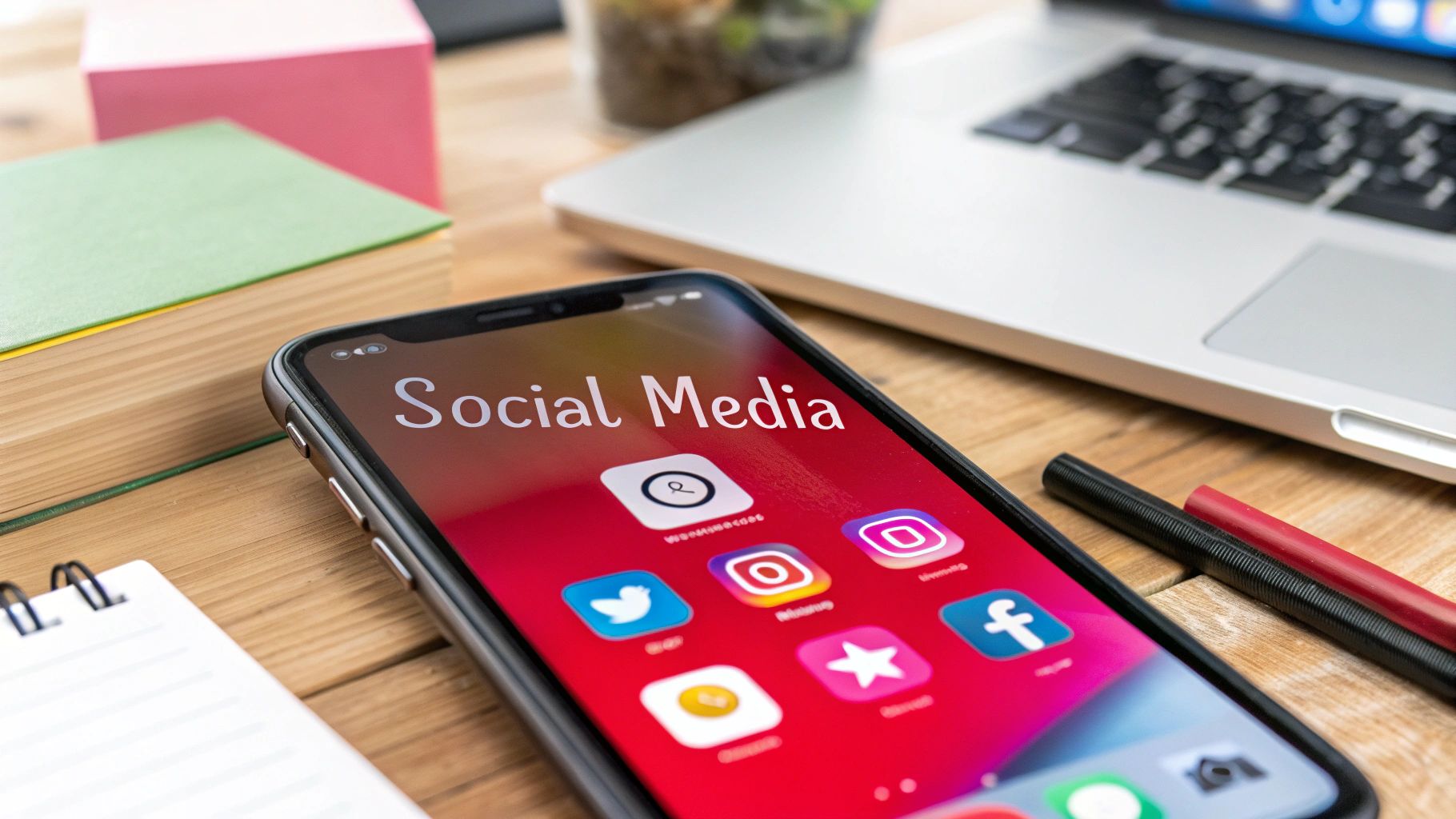
Creating a steady stream of authentic influencer content and UGC is a massive win. But letting it just sit on your organic feed is like building a race car and never taking it to the track.
Paid social advertising is the fuel that blasts your best content in front of thousands—or even millions—of potential customers who would never have discovered you otherwise.
The key is to shift your mindset. For brand awareness, you aren't just chasing immediate sales. You’re playing the long game, using paid ads to introduce your brand, tell your story, and build the familiarity that eventually leads to purchases down the road.
Structure Campaigns for Awareness, Not Just Sales
If your main goal is to build brand awareness, your campaign objectives need to reflect that. Instead of defaulting to "Conversions" or "Catalog Sales," you need to focus on top-of-funnel goals that maximize your reach and visibility.
These objectives are specifically designed to get your brand seen by as many relevant people as possible for the lowest cost.
- Reach: This objective is simple: show your ad to the maximum number of unique people in your target audience. It's perfect for when you just need to get your name and core message out there.
- Brand Awareness: Similar to Reach, this objective shows your ads to people who are more likely to actually recall them later. It’s a great way to start building that crucial top-of-mind presence.
- Video Views: If your best content is a killer video from a creator, this objective makes sure it gets watched. It’s an incredibly effective way to tell a richer brand story and stop the scroll in a crowded feed.
By choosing the right objective, you're telling the platform’s algorithm exactly what success looks like for you. This makes sure your budget is spent efficiently on building recognition, not just chasing clicks from people who aren't ready to buy yet.
Get Hyper-Specific with Your Targeting
The real beauty of paid social is its powerful targeting. You can go way beyond broad demographics and connect with audiences who are genuinely predisposed to love your brand. This is where you can get really strategic to amplify the impact of your influencer partnerships.
One of the most effective tactics? Target the followers of the specific influencers you’re already working with. If a creator’s audience already trusts their recommendations, serving them an ad featuring that same creator is a warm introduction. It feels incredibly relevant—less like a cold interruption.
Beyond that, here are two other powerful targeting strategies for brand awareness:
- Lookalike Audiences: Take a list of your best customers—the ones who buy repeatedly and leave glowing reviews—and upload it. Platforms like Meta can then build a "lookalike" audience, finding millions of new users who share similar characteristics. You're essentially cloning your ideal customer.
- Interest and Behavior Targeting: Dive deep into the interests, hobbies, and online behaviors that define your market. Are you a clean beauty brand? Target users interested in "sustainable living," "Credo Beauty," and "environmentalism." This ensures your ads are seen by people already engaged with your niche.
Remember, effective targeting is all about relevance. The more an ad feels like it was made specifically for the person seeing it, the more likely they are to pay attention and remember your brand.
Achieving this kind of recall doesn't happen overnight. Research shows that brands need at least 6 to 7 exposures to leave a lasting impression. This has only become more true with social media; in 2025, 76% of small businesses were using social platforms to boost brand recognition. This continuous engagement is vital because 77% of consumers prefer shopping with brands they follow on social media. You can find more details about how branding statistics reflect these trends on wisernotify.com.
Use Authentic Content for Ads That Don't Feel Like Ads
The single biggest mistake I see brands make with paid social is running ads that look like ads. Modern consumers have developed an uncanny ability to tune out polished, corporate-style content. This is where your library of influencer and user-generated content becomes your secret weapon.
UGC-style ads consistently outperform traditional studio-shot creative because they feel native to the social media feed. A vertical video shot on a phone by a real customer feels more like a post from a friend than a slick ad campaign. That inherent authenticity immediately breaks down barriers and builds trust.
When picking creative for your awareness campaigns, look for content that is:
- Relatable: It shows real people using your product in everyday situations.
- Engaging: It has a clear hook in the first three seconds to stop the scroll.
- Value-Driven: It clearly communicates a benefit or solves a problem, even if just through visuals.
By putting authentic, creator-driven content at the heart of your paid social strategy, you transform your ad spend from a simple expense into a powerful investment in genuine brand building. You’re not just buying impressions; you’re buying moments of connection that lay the foundation for long-term customer relationships.
Measure the Metrics That Actually Matter
It’s easy to get caught up in the excitement of launching new influencer partnerships and seeing all that fresh UGC roll in. But let's be honest, the question that keeps every marketer up at night is, "Is any of this actually working?"
Brand awareness can feel a bit fuzzy, but it's not some marketing black magic. It's a real, measurable outcome. The trick is to stop obsessing over vanity metrics like follower counts and start tracking the data that tells you you're genuinely earning a spot in your customers' minds.
A killer awareness strategy always leaves footprints in your analytics. You just need to know where to look. When you measure the right things, you can finally prove the business impact of your work and make way smarter calls on where to put your budget next.
Moving Beyond Surface-Level Data
Impressions and video views are flashy, but they don't tell the whole story. Sure, they show your content is being seen, but is it resonating? Is it building real brand recognition? To find that out, you have to dig deeper into the metrics that signal genuine curiosity from your audience.
These are the signals that show people aren't just scrolling past your content; they're actively seeking you out.
Here are the core metrics that I always keep an eye on:
- Direct Website Traffic: This one is the gold standard, period. When someone takes the time to type your URL directly into their browser, it means your brand is officially top-of-mind. Seeing an upward trend here is a massive win for your awareness campaigns.
- Branded Search Volume: Think of this as direct traffic's close cousin. It tracks how many people are specifically searching for your brand or product names on Google. Fire up your Google Search Console, and you'll see a clear lift when your efforts are paying off.
- Social Media Mentions and Tags: This is about more than just comments. When people start organically tagging your brand in their own posts and stories, they're shifting from being just customers to becoming advocates. Make sure to track both tagged and untagged mentions to get the full picture.
Analyzing Content Performance on the Ground Level
Let’s face it, not all content is created equal. To really dial in your strategy, you need to know which specific creator posts and UGC pieces are pulling the most weight. This is where getting comfortable with platform-native analytics is non-negotiable.
Dive into the insights on platforms like Instagram and TikTok. Don't just glance at the likes; hunt for the metrics that point to a much deeper connection.
Look for high share rates and save rates. A "like" is passive. It's easy. But a "share" or a "save"? That's an active endorsement. It means someone found the content so valuable they wanted to either pass it on or come back to it later—a huge win for brand recall.
For example, you might discover that a simple "how-to" video from a micro-influencer gets shared 10x more than a polished, professional photo from a creator with a massive following. That’s not a failure; it’s a powerful insight telling you exactly what kind of content to double down on for your next campaign. If you want to get a complete view, it’s essential to learn how to measure content performance effectively beyond just these surface numbers.
Measuring Recall and Perception Directly
Finally, remember that analytics can't tell you everything. Sometimes, to really understand brand recall and how people feel about your brand, you just have to ask.
Simple surveys and polls are incredibly powerful for this. You don't need a huge research budget, either. You can run polls right inside Instagram Stories or use free tools like Google Forms to survey your email list.
Try asking simple, direct questions like these:
- "When you think of [your product category], what's the first brand that comes to mind?"
- "On a scale of 1-10, how likely are you to recommend our brand to a friend?"
- "Which of these words would you use to describe our brand?"
When you combine the hard numbers from your analytics with this kind of qualitative feedback, you get the complete picture. This "dashboard" of meaningful metrics gives you the clarity to fine-tune your strategy, prove ROI, and keep building a brand that people don't just recognize, but actually care about.
From Awareness to Lasting Brand Advocacy

Let’s be real: getting your brand noticed is just the first lap. The real win isn’t a one-off spike in traffic; it's building something that lasts. You want a community that doesn't just buy from you, but believes in you.
The strategies we’ve walked through—authentic partnerships, UGC, paid ads—aren't just separate items on a checklist. They're all part of a cycle that, when it gets going, is tough to stop. Think of it as a momentum machine.
It starts with genuine content from influencers and your own customers. That content builds the trust and social proof you can't buy. Then, you put some ad spend behind it to get that authentic message in front of new, perfectly targeted audiences. Before you know it, those new customers start creating their own content, and the whole cycle starts over again, but stronger this time.
Keeping the Momentum Going
Consistency is everything. A single big campaign is great, but it’s the steady, reliable presence that builds an unshakeable brand. When people see you showing up, again and again, with the same voice and values, that initial awareness hardens into real trust.
This isn’t a short game. It's about committing to a few core actions day in and day out:
- Play the Long Game with Creators: Don't treat your partners like disposable assets. Nurture those relationships. Their ongoing support is gold.
- Shine a Spotlight on Your Community: When customers share their love for your brand, celebrate it. Feature them, thank them, and make them the heroes of your story.
- Stay Curious and Adapt: Keep a close eye on your analytics and listen to what people are actually saying. Be ready to tweak your approach based on what the data—and your customers—are telling you.
Brand awareness gets you in the door. Advocacy keeps you in the room. When your customers become your most passionate marketers, you've built something far more valuable than a recognizable logo—you've built a legacy.
Ultimately, all this sustained effort is what separates the flash-in-the-pan brands from the ones that stick around. It’s how you go from being just another option in a crowded market to a trusted name people are genuinely excited to stand behind.
Got Questions? We've Got Answers
Stepping into the world of brand building can feel like learning a new language. You're not alone if you've got a few questions buzzing around. Let's tackle some of the most common ones we hear from marketers.
How Long Does It Take to See Real Results?
I get this one a lot. The honest answer? Building brand awareness is a marathon, not a sprint. Sure, a really sharp influencer post or a paid social campaign that hits just right might give you a nice little buzz in a few weeks. But we're talking about meaningful, lasting recognition here.
You should be thinking in terms of 6-12 months of consistent effort to see a real, measurable lift in things like branded search volume and people typing your URL directly into their browser. The single most important factor isn't one big splash—it's consistency across every channel you're on.
What's the Difference Between Brand Awareness and Lead Generation Anyway?
It’s easy to get these two mixed up, but they play for different parts of the team. Think of brand awareness as your top-of-funnel play. It's all about getting your audience familiar with who you are, what you stand for, and why you exist. The goal is simple: recognition and recall.
Lead generation, on the other hand, is a middle-of-funnel tactic. It's focused on capturing contact info from potential customers who've already raised their hand and shown some interest.
The magic happens when you realize that strong brand awareness makes lead generation so much easier and cheaper. You're starting the conversation with a warmer audience that already knows you. Their goals and metrics are distinct, though: awareness is measured by reach and social mentions, while lead gen is all about that cost per lead (CPL).
Can Small Businesses Actually Build Brand Awareness on a Tight Budget?
Absolutely. In fact, this is where small businesses can really shine. You can punch well above your weight by leaning into authenticity and community. Instead of dropping thousands on a massive ad buy, focus your energy on partnering with nano- and micro-influencers. They often deliver way higher engagement for a fraction of the cost.
Get creative with user-generated content, too. Run a contest, feature your best customer photos on your social channels—make your community the hero. A small, strategically placed budget to boost your best-performing organic content can go an incredibly long way. The key is to be nimble and prioritize tactics that forge genuine human connections.
Ready to build a powerful content engine for your brand? With JoinBrands, you can connect with over 250,000 creators to generate authentic UGC and influencer content that drives real awareness. Start your first campaign today.
